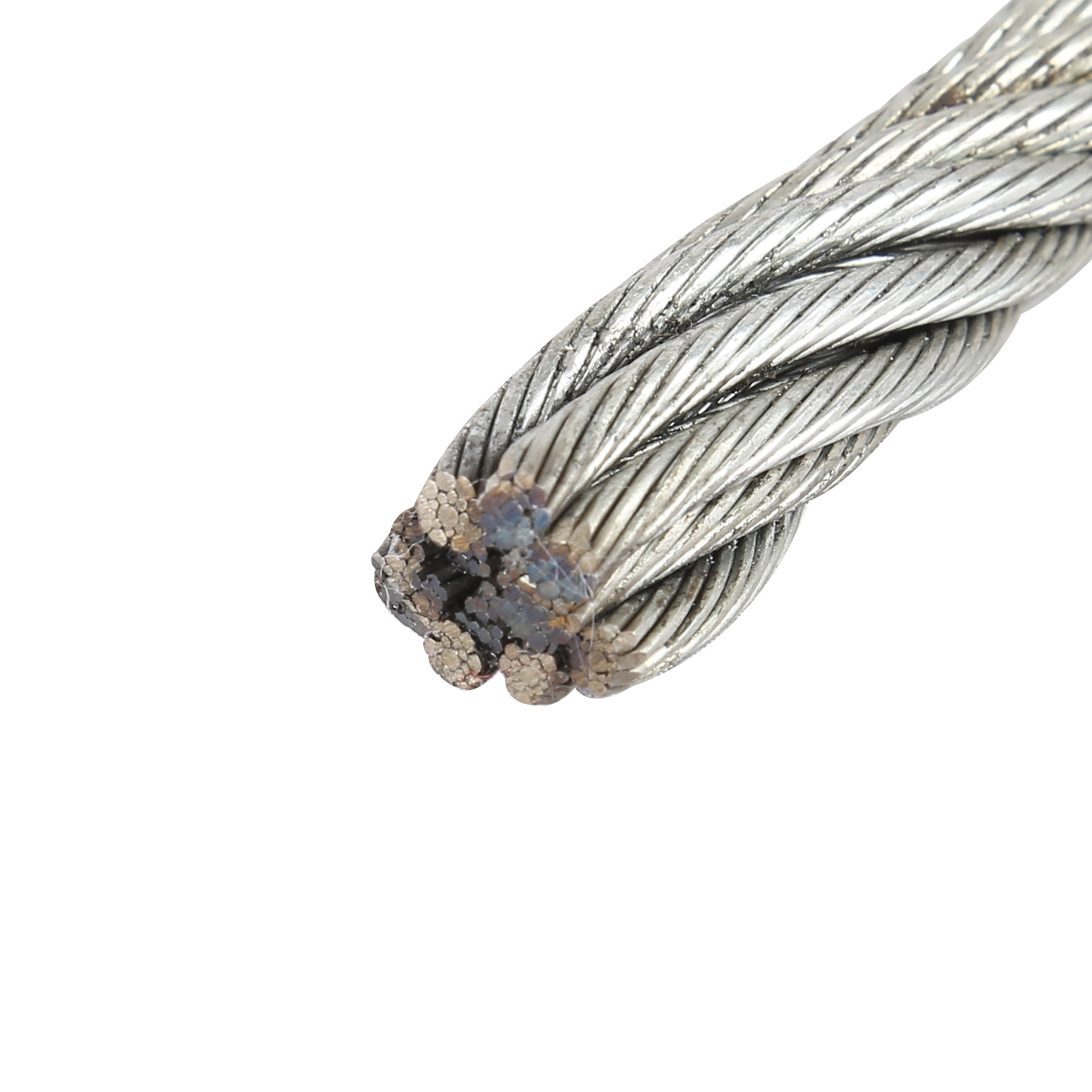Table of Contents
Steel Wire Rope Breaking Load: Importance and Factors Affecting It
Steel wire ropes are essential components in various industries, including construction, mining, and transportation. They are used for lifting heavy loads, supporting structures, and providing stability in various applications. One crucial aspect of steel wire ropes is their breaking load, which refers to the maximum amount of force the rope can withstand before breaking. Understanding the breaking load of a steel wire rope is essential for ensuring Safety and preventing accidents in the workplace.

The breaking load of a steel wire rope is influenced by several factors, including the material used, construction type, diameter, and length of the rope. The material used in the construction of the wire rope plays a significant role in determining its breaking load. Steel wire ropes are typically made from high-strength steel alloys, which provide the necessary strength and durability to withstand heavy loads. The quality of the steel used in the wire rope can affect its breaking load, with higher-quality steel ropes having a higher breaking load.
The construction type of the wire rope also affects its breaking load. Wire ropes can be constructed in various configurations, such as spiral strand, parallel strand, and compacted strand. Each construction type has its unique characteristics and performance capabilities, which can impact the breaking load of the rope. For example, compacted strand wire ropes have a higher breaking load compared to traditional spiral strand ropes due to their denser construction.
The diameter of the wire rope is another critical factor that influences its breaking load. Generally, thicker wire ropes have a higher breaking load compared to thinner ropes of the same material and construction type. The diameter of the wire rope is directly proportional to its breaking load, with larger diameter ropes being able to withstand higher forces before breaking. It is essential to consider the required breaking load when selecting the diameter of a wire rope for a specific application to ensure safety and reliability.
The length of the wire rope also plays a role in determining its breaking load. Longer wire ropes have a lower breaking load compared to shorter ropes of the same material and construction type. This is because longer ropes are more prone to bending and stretching under load, which can weaken the rope and reduce its breaking load. It is crucial to consider the required length of the wire rope when calculating the breaking load to ensure that it meets the safety requirements of the application.
In conclusion, the breaking load of a steel wire rope is a critical factor that must be considered when selecting a wire rope for a specific application. Several factors, including the material used, construction type, diameter, and length of the rope, can influence its breaking load. Understanding these factors and their impact on the breaking load can help ensure the safety and reliability of wire ropes in various industrial applications. By selecting the right wire rope with the appropriate breaking load, companies can prevent accidents and ensure the efficient operation of their equipment.
Understanding the Different Wire Pairs in Cat 5 Cable and Their Functions
Steel wire ropes are essential components in various industries, including construction, mining, and transportation. These ropes are designed to withstand heavy loads and provide reliable support for lifting and pulling operations. One crucial factor to consider when using steel wire ropes is their breaking load, which determines the maximum weight they can safely support without failing.
The breaking load of a steel wire rope is determined by its construction, material, and diameter. Thicker ropes with more strands are generally able to support heavier loads, while thinner ropes may have lower breaking loads. It is important to carefully calculate the breaking load of a wire rope before using it in any application to ensure safety and prevent accidents.
In the world of networking and Telecommunications, Cat 5 cables are commonly used to connect computers, printers, and other devices to a local area network (LAN). These cables consist of four twisted pairs of wires, each with a specific color-coding scheme for easy identification. Understanding the different wire pairs in a Cat 5 cable and their functions is essential for proper installation and troubleshooting.
Each wire pair in a Cat 5 cable serves a specific purpose in transmitting data between devices. The first pair, typically colored blue and white-blue, is used for transmitting data signals. The second pair, colored orange and white-orange, is used for receiving data signals. The third pair, colored green and white-green, is used for transmitting Power over Ethernet (PoE) signals. The fourth pair, colored brown and white-brown, is reserved for future use and is not currently used in standard Cat 5 cable configurations.
When installing or troubleshooting a Cat 5 cable, it is important to ensure that the wire pairs are correctly matched and terminated according to the T568A or T568B wiring standards. Mixing up the wire pairs or using the wrong color-coding scheme can result in connectivity issues and data transmission errors. By following the correct wiring standards and color-coding scheme, you can ensure reliable and efficient data transmission over Cat 5 cables.
In addition to Cat 5 cables, wire ropes are also used in various industrial applications, such as cranes and Hoists. When reeving wire ropes for cranes, it is important to consider factors such as load capacity, sheave diameter, and rope construction. Proper reeving of wire ropes ensures smooth and efficient operation of cranes and hoists, while also minimizing wear and tear on the ropes.
Reeving wire ropes for cranes involves threading the ropes through multiple sheaves and Pulleys to create a mechanical advantage for lifting heavy loads. By carefully calculating the reeving ratio and selecting the appropriate wire rope configuration, you can optimize the performance and safety of your crane system. Regular inspection and maintenance of wire ropes are also essential to ensure their longevity and reliability in crane operations.
In conclusion, understanding the different wire pairs in Cat 5 cables and their functions is crucial for proper installation and troubleshooting in networking applications. Similarly, reeving wire ropes for cranes requires careful consideration of load capacity, sheave diameter, and rope construction to ensure safe and efficient operation. By following best practices and industry standards, you can maximize the performance and longevity of wire ropes in various applications.

